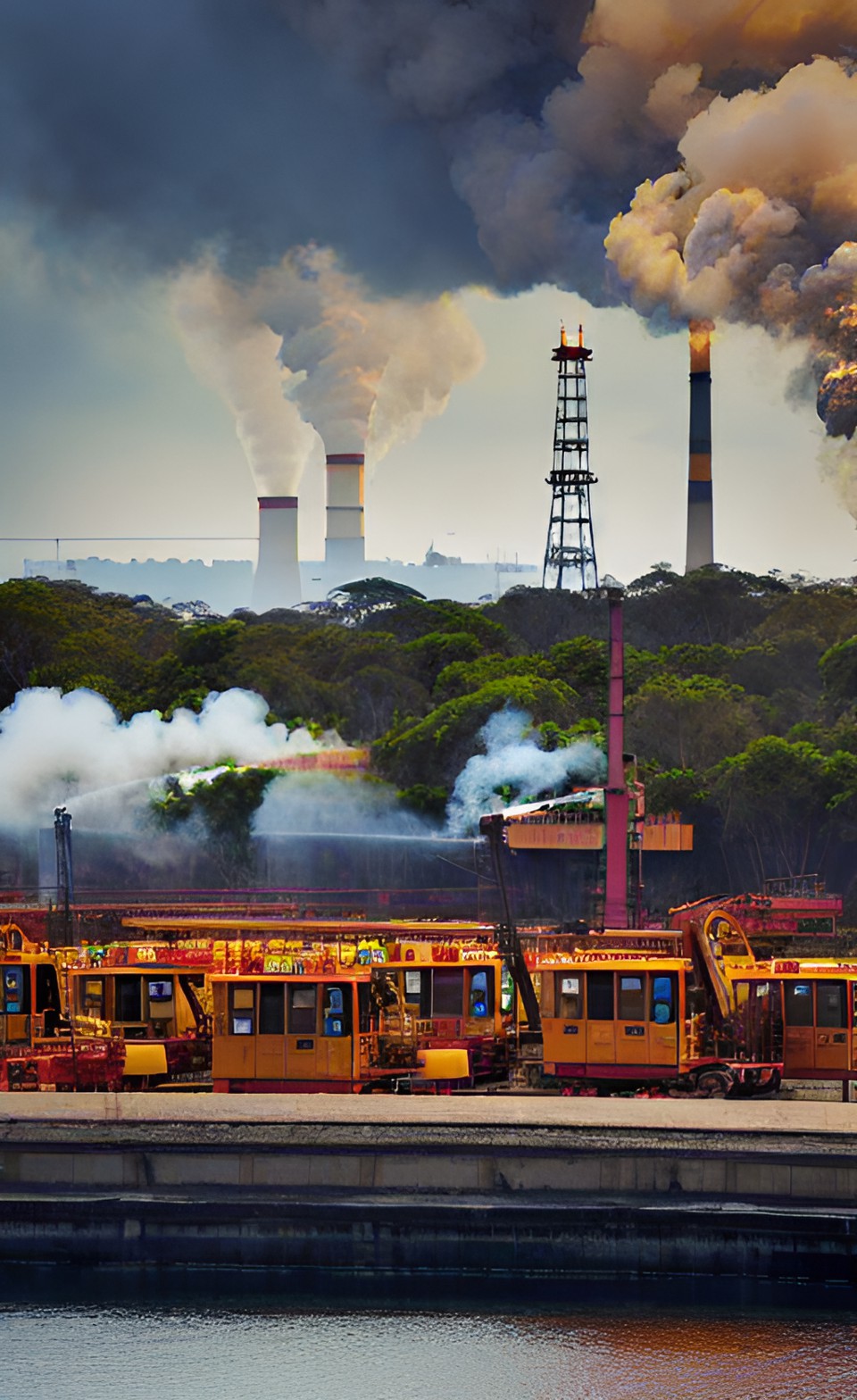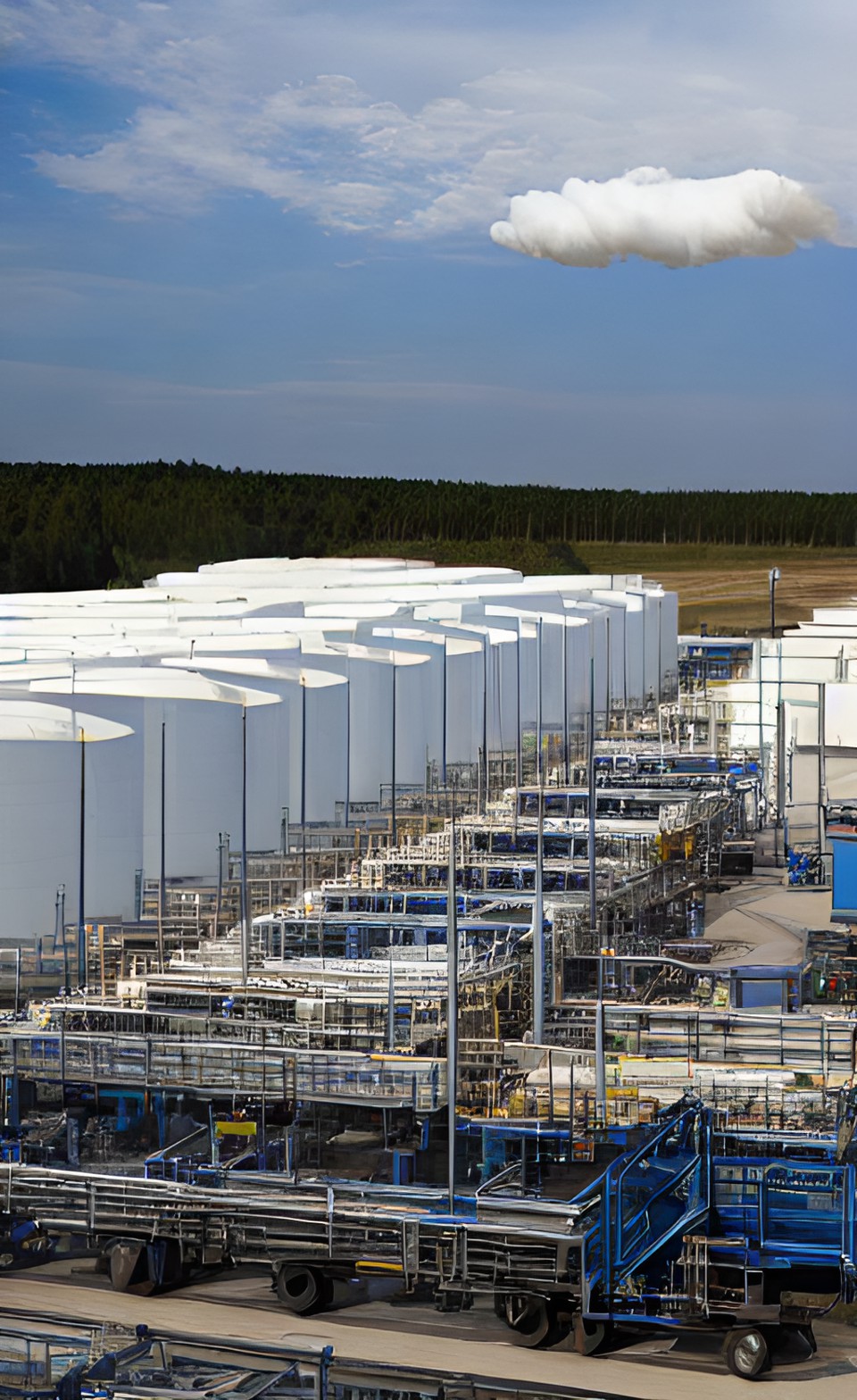- Air Homepage
- Alberta Air Quality
- Prevention of Air Pollution
- Air Emissions Inventory
Industrial Environmental Responsibility: The Step-by-Steps of Air Emissions Inventory
In section 4.0 of the Alberta Annual Emissions Inventory Reporting (AEIR) Program, we start industrial emissions reporting. Each step here is outlined, starting with previewing regulatory requirements and progressing with setting out your geographic boundaries. Here, industry employees can get a handle on air emissions inventory requirements with precision.
Alberta's Industrial Air Emissions Inventory: The Essential Guide - Does Alberta's Annual Emissions Inventory Report threaten your team's time and resources? Learn how to achieve seamless, stress-free regulatory compliance with this comprehensive, step-by-step blueprint that demystifies every requirement, from defining geographic boundaries to final certification.
For accurate reporting and environmental compliance, follow the guidelines spelled out by the authorities plan ahead and collect the needed data. If you stick to the program provided in these steps, your facility can uphold its responsibilities and meet regulatory standards.
Section 4.0 - Steps to Prepare for Reporting
When industrial emissions exceed reporting thresholds, it's time to start preparing the AEIR. Understanding requirements, scoping inventory, gathering info, and planning are all part of this. The AEIR completion process is covered in steps 5 to 21.
4.1 - Regulatory Requirements and Recommendations of the AEIR Program
There are several steps to follow when preparing an emissions inventory for an industrial operation. Here's how it works, starting with Preparation steps (Steps 1-4):
- Review AEIR Program Steps and Regulatory Requirements: Understand the rules and guidelines.
- Your emissions inventory should cover a specific geographic area.
- Finding information sources: Find data sources relevant to your emissions.
- Get organized and plan how you'll collect and report emissions.
The administrative information (Step 5): Find out what the industrial operation's location, contacts, and operational issues are.
 Regulatory compliance preparation steps for industrial operations
Regulatory compliance preparation steps for industrial operationsSteps 6-8: Release information from point and non-point sources:
- Find out where emissions are released and what they are.
- Identify non-point sources of emissions.
- Gather info about storage tanks, exposed storage piles, mine fleets, mine faces, and tailings ponds.
Information about the unit, process, and equipment (Step 9): List all the units, processes, and equipment involved in emissions.
Emission Limits and Pollution Control Technology (Steps 10-11):
- Find out what pollution control technology is in place.
- Identify normal, emergency, and upset emission limits.
Temporary Operating Information (Step 12): Describe when emissions happen, including release points and non-point sources.
Information about source monitoring (Step 13): Collect data from sources, both release points and non-point sources.
Substances in Schedule 2 and Quantification Methods (Steps 14-15):
- Find out what substances are Schedule 2:
- Decide how you'll measure emissions for Schedule 1 and 2.
Quantification of emissions (Step 16): Calculate actual, normal, and maximum emissions: Calculate actual, normal, and maximum emissions for Schedule 1 and 2.
Here's what else you need to know - Step 17 includes Miscellaneous info: Check totals, explain changes, describe methods, report modifications, mention reduction efforts, add comments.
Step 18: Quality Assurance and Quality Control: Implement quality assurance and quality control procedures, document results, and look for common submission issues.
Step 19 - Quantification Methodology Document: Create a Quantification Methodology Document outlining how emissions were quantified, making sure it follows content and format guidelines.
Complete the AEIR form, final review, and certification (Steps 20-21):
- Complete the AEIR Form: Enter all the data, review it, and sign it.
- Finally, submit the AEIR for review.
For regulatory compliance and environmental monitoring, these steps are crucial.
4.2 - Define the boundary of the geographical area
To prepare an emissions inventory, you need to define the geographic boundaries or scope of your report. It helps you figure out what should go in your emissions inventory and what shouldn't.
An industrial operation's geographic boundary includes all the release points (like chimneys or stacks) and non-point sources (where emissions can occur without a specific source). It's usually defined by your industrial site's fenceline or physical boundaries.
 Quantitative boundaries helps us report accurate data
Quantitative boundaries helps us report accurate dataOccasionally, your operation's boundaries overlap with another industrial operation that has a separate environmental approval. Make sure your emissions inventory only includes your own release points and non-point sources, not the other operation's. According to their own environmental approval, they should be inventoried and reported separately.
Occasionally, two separate industrial operations can do combined environmental reporting. For guidance on how to define the geographical boundary and report accordingly, contact the Alberta Air Emissions Inventory Program if you're doing combined reporting.
Some industrial operations have authorization for separate environmental reporting for different parts of the operation. You should also contact the Program if this applies to your operation.
By defining this boundary, you make sure your air emissions inventory accurately represents your industrial operation.
4.3 - The following sources of information may be helpful to you
You need to identify potential sources of information and data for your industrial operation as the third step of preparing an emissions inventory. Inventory and reporting requirements depend on these sources. Here's what you need to know:
There may already be data available for your operation, like your EPEA (Environmental Protection and Enhancement Act) approval, which includes authorized sources, pollution controls, monitoring and reporting details, and emission limits.
Review the documents related to your EPEA approval or renewal applications, as they contain valuable information about sources, stack parameters, emission rates, and modeling inputs.
 The EPEA approval process for industrial operations
The EPEA approval process for industrial operationsCheck out the latest EPEA approval reports and source monitoring data, including monthly/annual reports, Continuous Emissions Monitoring System (CEMS) data, Stack Sampling Reports, and Fugitive Monitoring Reports. Check out emissions inventories prepared for other reporting programs like the National Pollutant Release Inventory (NPRI) and Specified Gas Reporting Program. They can tell you where things come from and what they do.
Collect equipment inventories and activity records, including fuel usage and production info. Review documentation and procedures related to emission measurement and estimation methodologies your company developed.
Analyze company and industrial procedures for data storage, handling, reporting, and approval. Explore other data sources like Geographic Information System (GIS) data.
You can find a lot of information online about planning and developing an air emissions inventory. Furthermore, you can use the same AEIR Form for subsequent inventory years, updating and revising it as necessary. You'll keep your emissions inventory accurate and up-to-date this way.
Review the previous year's AEIR Form to see what needs updating, adding, or removing. This includes contact info, operational details, release incidents, source monitoring, major shutdowns, and annual emissions. Normal and maximum emission rates don't change every year, but they may need updating due to changes in your operation or operating conditions. Your AEIR Form and Quantification Methodology Document should reflect any changes in quantification methodologies authorized by the Director.
4.4 - Air Emissions Inventory preparation and planning
Preparing for the AEIR Air Emissions Inventory Program involves adequate preparation and planning. Create a work plan tailored to your specific industrial operation. This plan should include:
Document the procedures for developing the air emissions inventory and preparing the AEIR. It's important to define and structure these procedures.
 Preparing AEIRs seamlessly ensures accuracy.
Preparing AEIRs seamlessly ensures accuracy.Efficiency: The work plan makes sure the inventory development and reporting processes run smoothly. This helps you meet the September 30th reporting deadline.
Determine the resources you'll need, including personnel, equipment, and data. Make sure these resources are available when you need them.
Develop procedures for handling issues that may come up during the process. You could fix errors, missing records, conflicting information, or delays.
Timeline: Set specific deadlines for each part of inventory development and reporting. Set milestones for tracking progress and assign tasks to staff.
Schedule any necessary team meetings to review progress, address challenges, and coordinate efforts. Provide a timeline and any payment requirements if you need IT resources.
If you're using external resources, like environmental consultants or source monitoring contractors, make sure you know when they're due. Establish a timeline for getting management approval and sign-off on the AEIR, especially the Statement of Certification.
Prioritizing: Spend more time and effort on the biggest sources and substances. Smaller sources and lower priority substances can't be ignored, but significant sources and priority substances need accuracy and completeness.
This will help you stay organized, meet deadlines, and make sure your emissions inventory is accurate and complete. It also serves as a foundation for future years' AEIRs, since you can probably reuse a lot of the same stuff.
Do you feel overwhelmed by the annual emissions inventory reporting requirements for your industrial facility in Alberta? It is our pleasure to provide expert assistance tailored to your specific needs at
Calvin Consulting Group Ltd.
In accordance with the Environmental Protection and Enhancement Act (EPEA), Alberta industrial facilities are required to prepare and submit an annual inventory of emissions and contaminants by September 30 each year. Serious consequences can result from noncompliance.
We help industrial facilities fill out and submit the Annual Emissions Inventory Report (AEIR) form. We make sure compliance with regulatory requirements starts with the initial preparation steps.
Here's what we do:
- Understand and adhere to the AEIR Program Handbook's rules and guidelines for emissions reporting.
- Gather data from various sources about your emissions, like administrative details, release points, non-point sources, and equipment info.
- Quantification of emissions: Calculate annual emissions rates for Schedule 1 and 2 substances.
- Implement quality assurance and quality control procedures to document results.
- Preparation: Fill out the AEIR Form, review the report, and submit it.
AEIR submissions can be streamlined for you, ensuring regulatory compliance and environmental responsibility. Send us an message at

to find out how Calvin Consulting Group Ltd. can help you meet your industrial facility's annual emissions inventory reporting requirements. Let us help you navigate the complexities and make your submission smooth and successful.
Clean air is our Passion...Regulatory Compliance is our Business.
The AEIR Program starts outlining the steps for reporting industrial emissions in section 4.0 of the program code.
Submitters need to understand requirements set out in this document and define the boundaries in which they operate geographically. They also need to defend their source data at every stage. This guide covers everything, including regulatory compliance and environmental monitoring.
Do you have concerns about air pollution in your area??
Perhaps modelling air pollution will provide the answers to your question.
That is what I do on a full-time basis. Find out if it is necessary for your project.
Have your Say...
on the StuffintheAir facebook page
Other topics listed in these guides:
The Stuff-in-the-Air Site Map
And,
Thank you to my research and writing assistants, ChatGPT and WordTune, as well as Wombo and others for the images.
OpenAI's large-scale language generation model (and others provided by Google and Meta), helped generate this text. As soon as draft language is generated, the author reviews, edits, and revises it to their own liking and is responsible for the content.

New! Comments
Do you like what you see here? Please let us know in the box below.